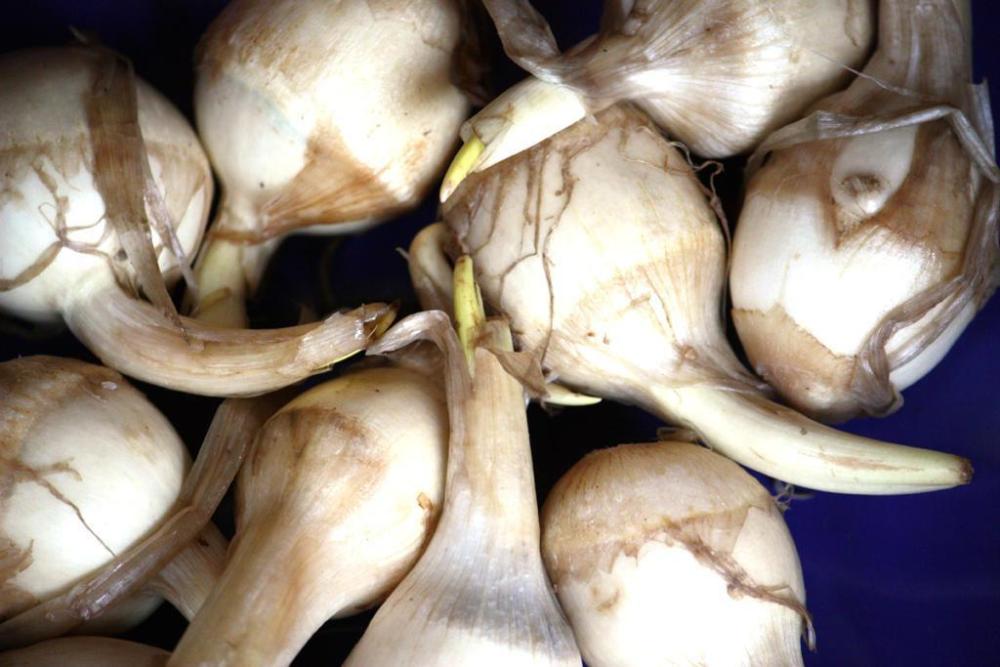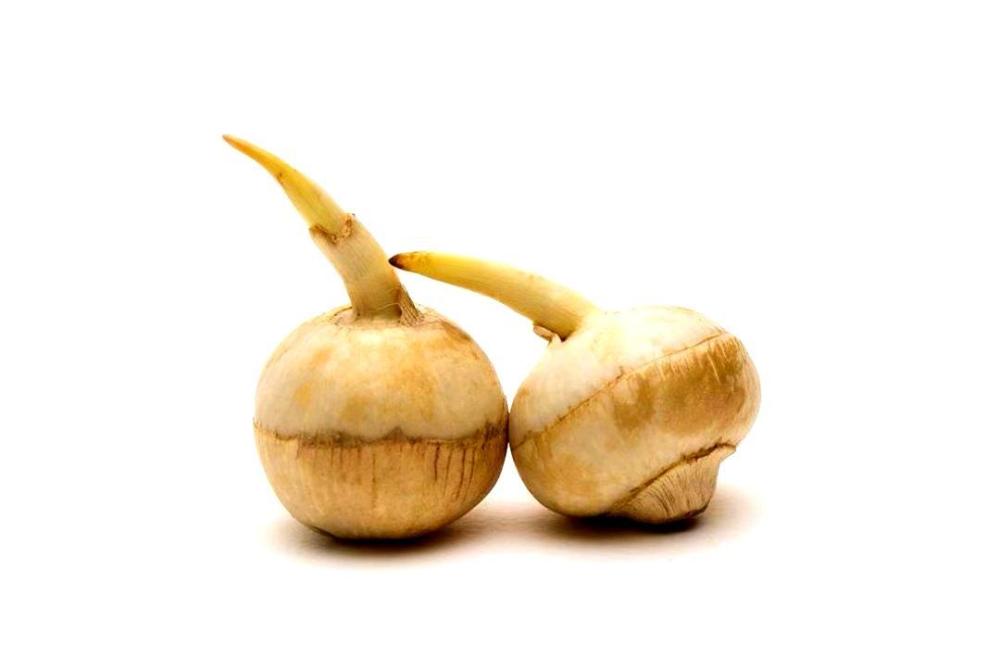The great Chinese potato mystery mentioned before is somewhat topical.
Every year, around now these turn up in the markets and supermarkets. They are the egg-sized tubers of a flowering plant, Sagittaria sagittifolia, sometimes known as arrowhead because of the shape of its leaves. In Chinese they are 慈菇 cí gū.
These were also a staple of Native Americans and known to the Cree as 'wapatowa' meaning 'white mushroom'. Later the name was applied as 'wapattoo' by the Chinook to potatoes which may account for the name confusion in early American cookbooks.
Interestingly, the gū part of the Chinese name also means 'mushroom'. The mystery is still partially unsolved.
In China, they are traditionally eaten at Chinese New Year (Spring Festival), usually in hot pots. I use them in beef casseroles etc.
They taste fairly bland but are starchy like potatoes, though they remain crunchy even after cooking. Peel them and stew / boil for around 20 minutes. Alternatively they are excellent when roasted.




